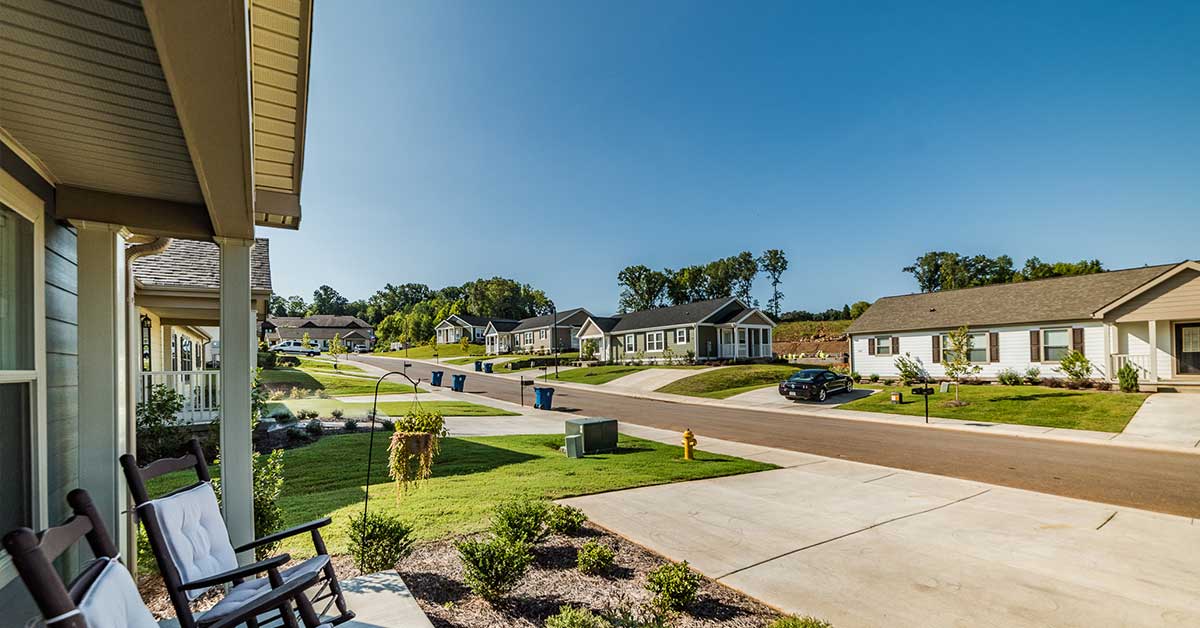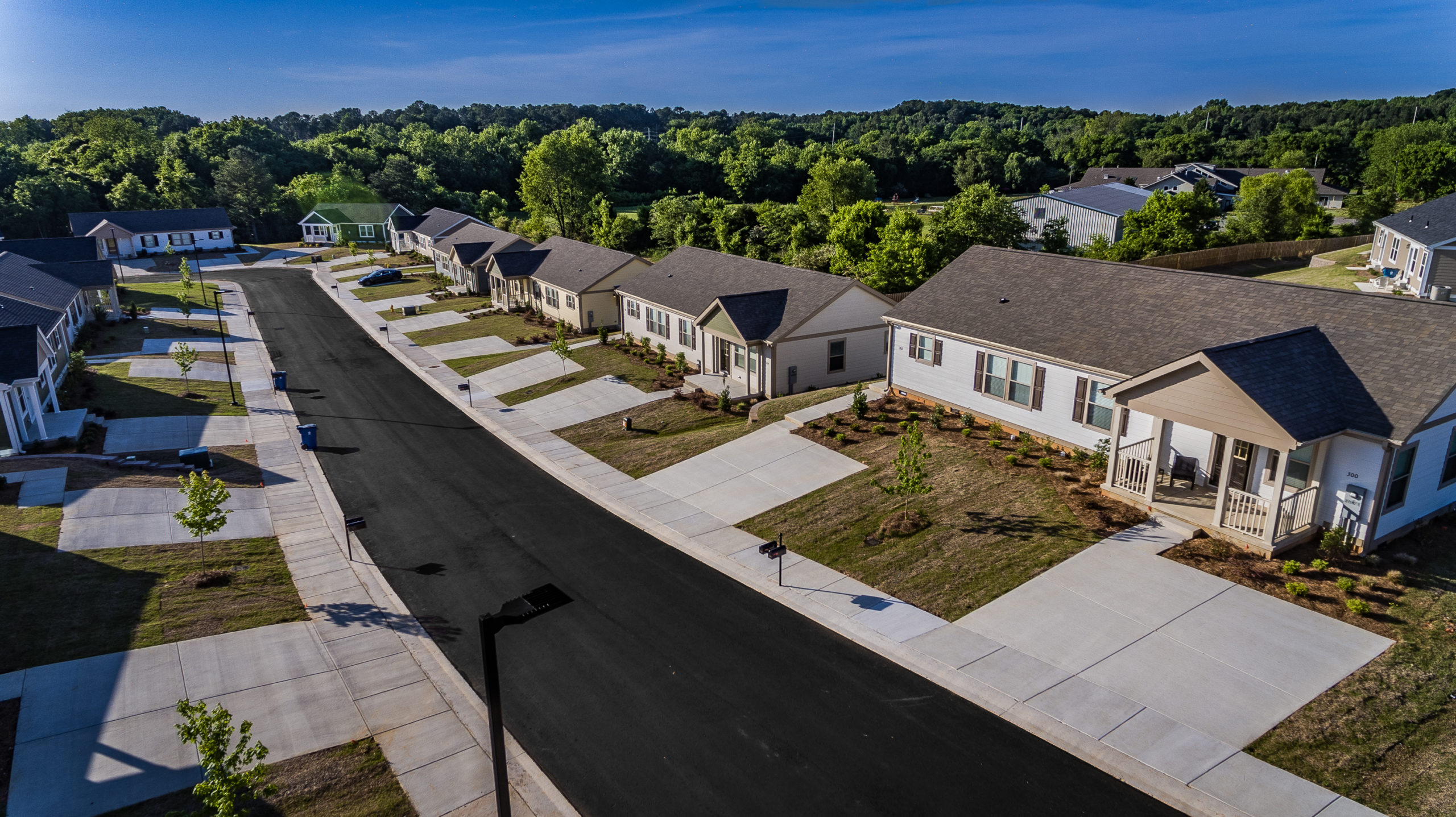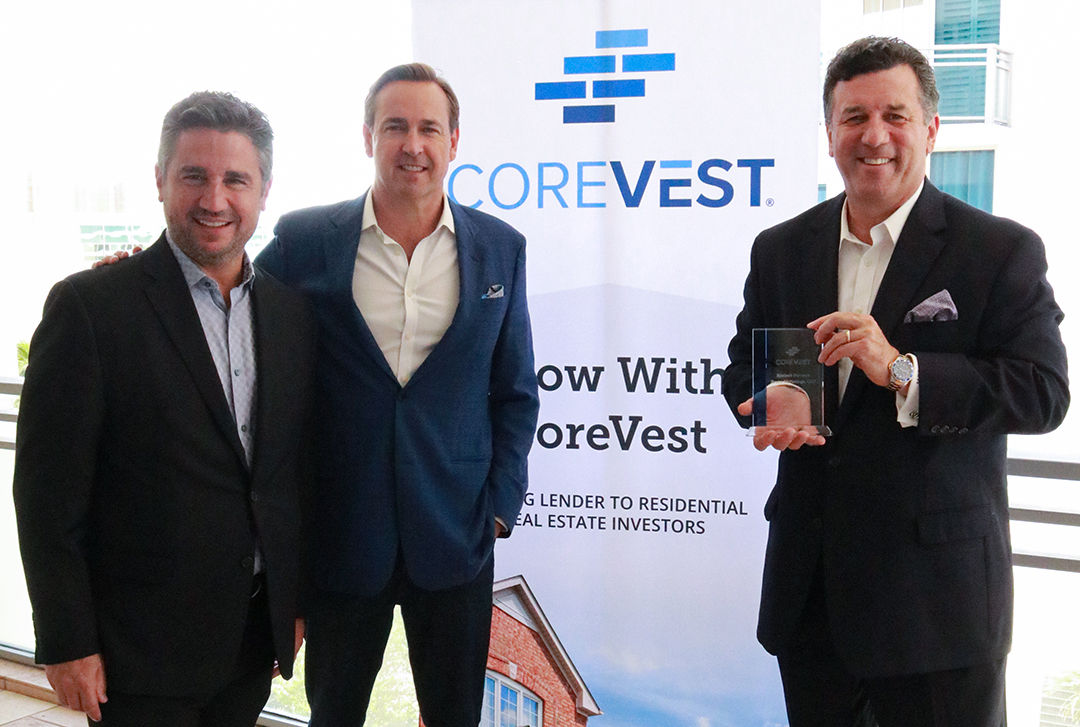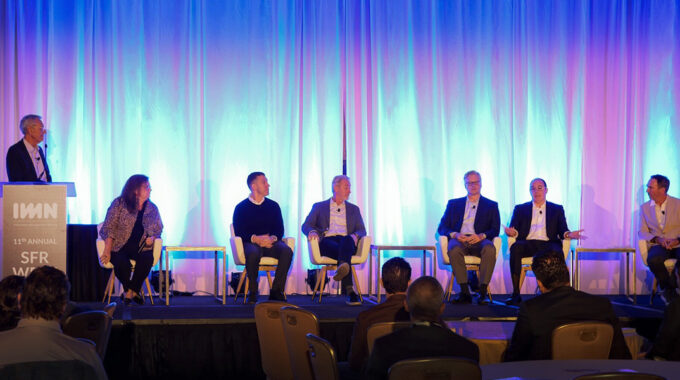CoreVest Finance recently attended the MBA CREF/Multifamily Housing Convention & Expo in San Diego, CA.…
Single Family Rentals – A Market Reflection

Top Takeaways from 2019
By Multiple Industry Contributors
If hindsight is 20/20, then a retrospective at the start of 2020 should offer great insight into the past year. We collected observations from a range of viewpoints – SFR investors, lenders, brokers and service providers – to get their opinion of meaningful trends and developments in 2019 and beyond.
What did we find? Below are the key themes and soundbites that best capture the past, and perhaps, the future state of the SFR Industry.
SFR is Legitimized and Continues to Evolve
2019 further legitimized the SFR asset class. Operators continued to invest and evolve their focus—expanding into new markets, buying different types of assets and developing new technology-oriented rental models.
“A substantial ecosystem has blossomed to support the industry by offering capital, property management, appraisals, insurance, renovation and other services. Many individuals in the SFR space are on their second, third or fourth companies as they adapt to new opportunities.” – Ryan McBride, COO of CoreVest
“Buy and hold single-family rental is a permanent real estate asset class. The big operators seem to be more focused on improving operations and consolidating rather than on acquisitions.” – Douglas Skipworth, Co-Founder of CrestCore Realty
“SFR has now become a legitimate replacement or option for real money that may have been invested into apartments. Owners and operators are chasing yield and see it as a more profitable alternative.” – Bruce McNeilage, CEO of Kinloch Partners
Would you like to speak to a loan specialist?
“I think many thought the SFR sector would fade. We’re clearly seeing new entrants, as well as existing investors that continue to acquire additional collateral.” – Dennis Spivey, Vice President at CoreVest
“SFR Investors are seeing the value in the long-term strategy of buying and holding versus the short-term satisfaction of cashing out on a flip project. As inventory becomes harder and harder to find, investors seem to be holding their assets and building rental portfolios. – Lee Rogers, President of RealProtect
“Lots of borrowers are aggregating as opposed to flipping. Long term holds are very much a part of most investors strategies as HPA has declined.” – Micaela Lumpkin, Senior Vice President at CoreVest
“Most of the experienced players are still bullish on SFR despite cap rate compression, more modest HPA, and our long in the tooth economic expansion that is now 10 years old.” – David Lichtenger, Managing Partner of Intrepid Capital Investments
“The number of borrowers that claimed to own over 100 properties is substantially higher than last year. It appears that a large portion of SFR properties that were owned by ‘Mom and Pops’ are starting to join larger portfolios.” – Augie Jones, Relationship Manager at CoreVest
 Photo Credits: JCF Residences
Photo Credits: JCF Residences
Build-to-Rent Wins Flavor of the Year
While build-to-rent (BTR) was all the buzz in 2019, it is still growing and really consists of a few different flavors, not just a single strategy. Only a handful of players were purely building, renting and managing themselves. To the many more, the strategy was buying new build and leasing up. To others still, it was purchasing leased pools of new assets in bulk deals.
“Build-to-rent was certainly all the buzz but don’t lose sight of the fact that renovate-to-rent is still the largest part of this market. Both strategies are adding much needed affordable housing into neighborhoods that need it.” – Beth O’Brien, CEO of CoreVest
“Build for Rent is the hot topic. Some SFR investors are starting to add this product to their portfolio and equity investors are very interested in this space.” – Gary Porter, Vice President and Nashwa Moussa, First Vice President at CBRE
“Home builders are ready to pivot – and hold more of their homes as rentals. This pivot seemed to have investors buzzing about more efficient, consolidated property management and novel build-to-rent methods.” – John Prins, Vice President at CoreVest
“BTR continues to be a hot topic and trend, as well as multifamily. Lenders and other service providers are quickly adapting to these trends and introducing products to capture the money that is flowing into these two sectors of the market.” – Lee Rogers, President of RealProtect
“There is value in acquiring bulk, new build assets that come turnkey with reduced maintenance, capex and management costs. This should be a significant driver of business from an investor and financing perspective moving into 2020.” – Ian Hardcastle, Vice President at CoreVest
“Build-to-Rent continues to receive attention, but a small number of investors are truly leveraging this strategy vs. renovate-to-rent. Likewise, very few lenders have a build-to-rent complete program and even fewer have actually executed on these types of loans.” – Tuan Pham, Senior Vice President at CoreVest
SFR is a Great Defensive Play for Investors
Growth in rents and values may have slowed in 2019, but the single-family rental business has been a great defensive play. There is softening in the luxury housing market and even a slowdown in traditional build-to-sell inventory, but a closer look at single-family rental shows no signs of that softening.
“Historical data suggests that growth in single-family rental yields are not only counter cyclical but have never gone negative even in deep recessionary periods over the past several decades. Given the recently inverted yield curve and what that usually portends, this is probably a good thing for the industry.” – Beth O’Brien, CEO of CoreVest
“The SFR space continues to attract very large investors including Sovereign wealth funds and some of the largest alternative asset managers in the world. Investors are seeing SFR as safe and a good hedge against Trade wars.” – David Lichtenger, Managing Partner of Intrepid Capital Investments
“There were frequent conversations of the investors’ appetite for doubling down on their SFR investments or about new investors who want to enter the SFR asset class. Institutional investors want to participate in asset classes that are proving themselves to be growth oriented and resilient, such as SFR.” – Charles Chacko, Co-CEO of OS National
“We’re clearly seeing investors continue to acquire additional collateral. Some of the large, early buyers (Cerberus, Blackstone, etc.) have been shedding portions of their portfolio which is creating opportunities for mid-size operators to grow.” – Dennis Spivey, Vice President at CoreVest

Technology Leaps Forward, Adoption to Follow
2019 saw the rise of “iBuyers” as many tech brands, such as Opendoor, Zillow and Offerpad, significantly increased their acquisition of residential real estate and deepened their involvement in the investment space. However, it also was a year noted by many new technology entrants, exciting innovations and real improvements to software for investors, lenders or vendors, from institutional players to smaller operators.
“There continues to be more and more innovation in the sector, with both investors and service providers bringing new technology and services to the asset class.” – Lee Rogers, President of RealProtect
“I see technological advancement in many areas of real estate investing. It is encouraging to see the industry striving to innovate despite its ability to make returns without much technological change.” – Andy Thienkosol, Vice President at CoreVest
“As with any industry in the early growth phase, fintech and proptech seems to have grown faster than market adoption as there is an abundance of technology companies exhibiting at the conference, but many firms have admitted on the panels to be behind in that category vs. truly tech-forward.” – Tuan Pham, Senior Vice President at CoreVest
“I think we are in a cycle similar to what happened to the residential space back in 2011. Multiple tech vendors stepped in to supply solutions for the market.” – Brad Chmura, Vice President at CoreVest

Relationships and Partnerships Drive the SFR Industry
With all the mergers and partnerships in 2019, it’s apparent that most groups have shifted from being internally focused to finding ways to work with other industry players to bolster their growth and expansion. Many groups use these events to join forces, compare notes, determine best practices and in some cases, identify new business opportunities.
“It was extremely interesting to see the rekindling of connections, as well as how those connections created new introductions. There were also a large number of people who had worked together on a different side of the industry in the past, that now had the opportunity to work together again in a different capacity.” – Brendan Hamilton, Analyst at CoreVest
“As the SFR market expands its institutional footprint and acceptance, SFR lenders and owners see a big expansion of available services focused on the space.” – Samuel Harrity, Senior Vice President at CoreVest
“In this stage of the SFR industry lifecycle, there seems to be a handful of key players that have established a name and that the greater community surrounding the industry recognizes.” – Trevor Hanson, Analyst at CoreVest
“The maturation of the SFR space has promoted consolidation (CoreVest and 5arch joining Redwood Trust). This presents a great opportunity for borrowers to leverage some of the efficiencies that come from a stronger capital source.” – Ian Hardcastle, Vice President at CoreVest
“We always talk about this as a relationship industry; however, this was more apparent than ever this year.” – Augie Jones, Relationship Manager at CoreVest

Parting Thoughts on the Year that has Passed
Overall, 2019 was an incredible year for the SFR industry and provided strong momentum heading into 2020. Yet, there is still substantial headroom for growth. Despite its success in recent years, the general sentiment is that we are still in the early innings of the growth cycle for this industry. Looking forward, participants can expect to see a continuous inflow of capital, technology, innovation and resources from all directions, whether it is Wall Street or Main Street.
We’ve seen increased mergers and consolidation across the market in 2019 – from Opendoor’s acquisition of OSN, to Mynd’s purchase of HomeUnion, to Redwood Trust bringing in 5arch and CoreVest into its family of companies. On the horizon for 2020, more of this activity may be waiting to unfold. This is a direct result of the value that companies are seeing in the different sectors of this industry and the synergy that those adjacent companies bring. It is a natural part of the market maturity process, which will help foster explosive growth in the years to come.
2019, we thank you, and we look forward to what the rest of 2020 will bring!



